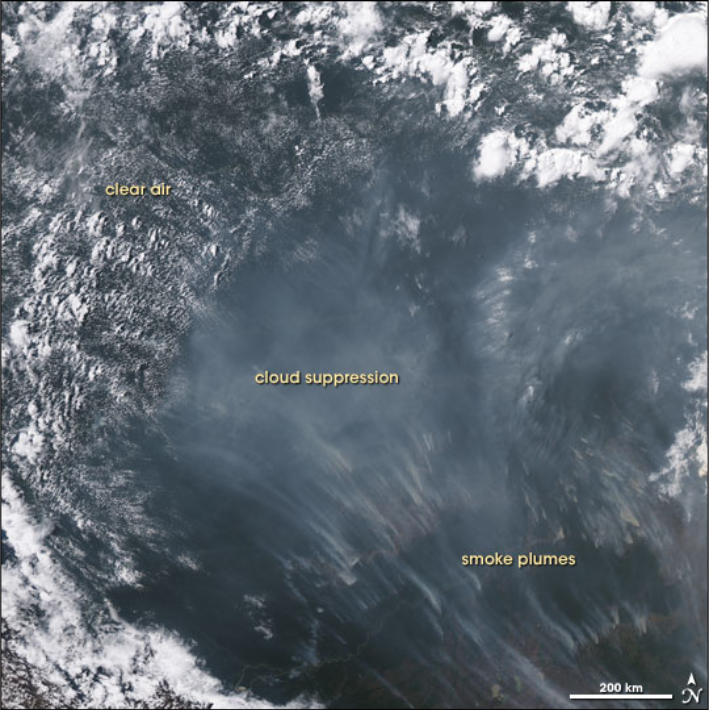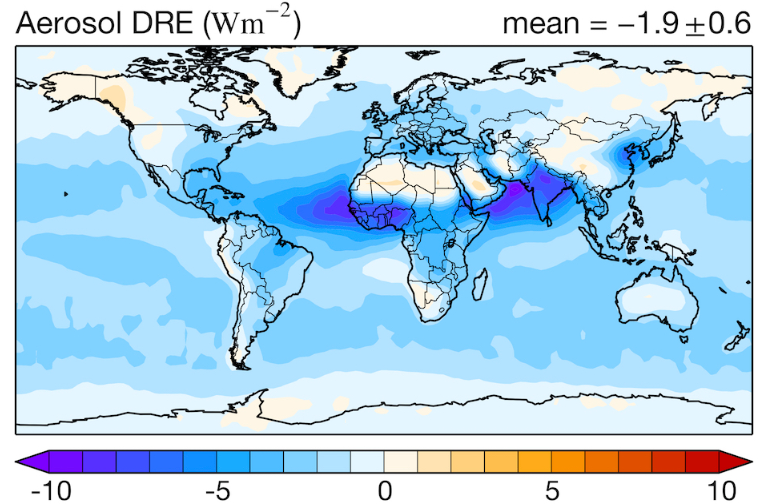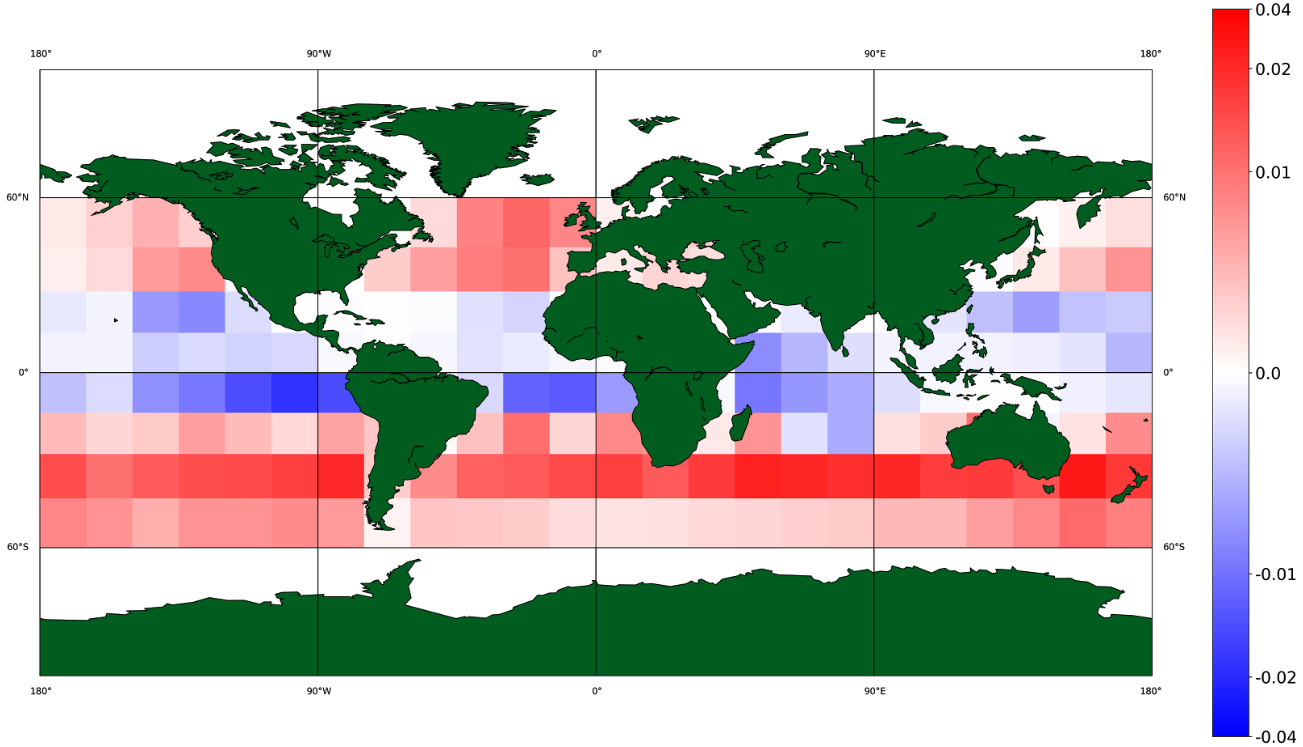Aerosols and Climate
Aerosols and Climate Introduction
Aerosols are suspended particles in the atmosphere released by both natural and anthropogenic sources. Their interactions in the atmosphere alter a number of climate and weather processes through direct, semi-direct, and indirect effects. Direct effects refer to aerosols directly interacting with radiation in the atmosphere, altering local and global radiative balance. Aerosol semi-direct effects encompass the set of ways clouds may be influenced by overlying aerosols that alter the local radiative balance due to their differing albedo and absorption profiles. Indirect effects occur when aerosols act as cloud condensation nuclei within clouds, altering the cloud’s radiative impact. Our research seeks to understand and quantify all three effects using satellite and field campaign observations.
Direct Effects
Aerosols scatter and absorb sunlight which has a profound impact on the global energy budget. Our research explores the global, regional, and seasonal patterns of aerosol direct radiative effects, heating, and anthropogenic forcing. This is achieved using CloudSat's radiative fluxes and heating rates product (2B-FLXHR-LIDAR) that provides vertically resolved fluxes consistent with A-Train observations of aerosols and clouds. As lead developer of this dataset, we calculate, validate, and evaluate the data to assess accuracy in the product and document new estimates and results. Through these efforts, we have achieved a better understanding of the global distributions of aerosol-radiation interactions that is essential for reducing uncertainties in global aerosol simulations and improving future climate projections.
Semi-direct Effects
The NASA ORACLES campaign is an ongoing field project taking place over the SE Atlantic Ocean, where a wintertime biomass burning layer interacts with a semi-permanent stratocumulus cloud deck. This project offers an unprecedented dataset aimed at providing critical observational constraints to climate models. Scientific objectives include collecting in-situ and remotely-sensed cloud and aerosol data, evaluating the aerosol direct, semi-direct and indirect effect, and quantifying precipitation suppression by aerosols. Our group is assisting in the collection and analysis of airborne radar data. We are exploring the extent to which cloud and warm rain are influenced by absorbing smoke aerosol above.
Indirect Effects
Aerosol indirect effects are one of the most poorly modeled and least understood climate processes. High resolution observations from CALIPSO and CloudSat allow an unprecedented view of aerosol-cloud-radiation interactions. We are currently trying to estimate the effects aerosols have on warm cloud cover (see figure), brightness, and precipitation characteristics in order to separate the shortwave indirect effect into contributions from albedo and lifetime changes. Our work includes looking at clouds within a cloud regime framework, which allows for a more “laboratory-like” experiment. Our work also seeks to focus on untangle the effects of precipitation on aerosol-cloud interactions and the relative role of aerosol when compared to other environmental controls.



